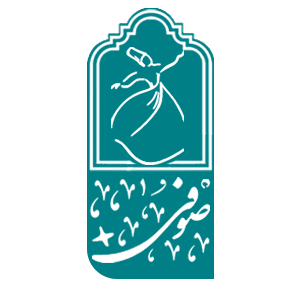
Sama dance is a Sufi ritual that is performed as dhikr. Sama’ means “to listen”, while Zikr means “to say”. These performances often include singing, playing instruments, dancing, reciting poetry and praying, wearing symbolic clothing, and other rituals. Sama is a particularly popular form of worship in Sufism.
Sama dance is a type of dance of people who have Sufism, in mystical terms, a state that due to emotional emotions, and inner roaring, and inner passion and ecstasy to mystics on the path of knowledge, and those who seek the path of truth, and those who reach the Kaaba of Unity, He shook his hand and sometimes he encouraged them to stand up from his own will, at any time and in any place, heedless of the taunts of the ill-wishers and the curses of the enemies, like Maulana Jalaluddin Muhammad. and turn their bodies and beat their feet on the ground.
This dance is performed by turning the body in a state of trance for spiritual purposes, which includes listening, hearing, singing, ecstatic hymns, and stomping and clapping hands of Sufis individually and collectively with special rituals and ceremonies. Sama has a long history and after Islam, it has found supporters and opponents in this religion.
.
Clothes in Sama
The clothes of Maulana, Shamsuddin Tabrizi, and Sultan Voled can be seen in the mirror box placed in the middle of the auditorium. Some of these clothes are made of linen and some of silk and other fabrics.
According to old sources, Maulana wore a light brown hat and a cotton turban over it, he wore a walbadah of different colors, and he wore a shirt and a kabayi. Rumi was a tall man with a tall body and a pale complexion. The clothes that are left of him are suitable for the description that has been made of him. Rumi’s turban and his turban named “Arqiya” are kept in this museum. In addition, there is a hat by Shams al-Din Tabrizi and a Qabai by Sultan Voled, and a cloak made of Atlas Sabz by him in this museum.
.
Sama dance musical instruments
A place in the library is dedicated to the exhibition of musical instruments. These musical instruments are: reed, rabab, daf (circle), tambur, fiddle, bow, tar.
.
The time of the emergence of Sama
There is no exact information about the origin of Majlis Sama, but Sama has a non-Islamic religious history and has been used in religious questions and places of worship since ancient times and gives the listeners heartache (Tarikh Khanqah Iran p. 429).
But what is certain is that in the beginning of Islam, there was no Sama as it was held in Sufi meetings, until in 245 AH, when Zalnun Masri was released from prison, the Sufis gathered around him in the mosque of Baghdad and asked his permission about Sama. Qawwal recited a poem, and Dhul-Nun Masri also expressed his joy, and in 253 he established the first Sama ring in Baghdad by Ali Natukhi, one of the companions of Seri al-Saqati (died 253).
From this time onwards, hearing meetings took shape, it became customary to form a hearing circle, a group watched it, the attraction of music accompanied by a series of mystical and stimulating words invited passionate and sensitive people to a kind of spirituality and spirituality, and some people They used to perform Sama together with the Sufis.
.
Sama Maulana dance
Another fan of Sama was Maulana Jalaluddin Muhammad Balkhi, whose increasing attention to Sama was not without influence in the immortalization of this ritual among the dervishes, especially Maulviyya. At first, like his father, Baha Wold, Maulana was busy teaching, preaching, and mujahidah, and he had never heard of Shams, but when he saw Shams Tabrizi, he fell in love with him and took advantage of everything he said. So when Shams pointed out to him that Sama Dara, 38-year-old Maulana was so influenced by Shams that he left the pulpit and school. Shams’s reasoning in encouraging Maulvi to listen to Sama was that what Ruma asks for will increase with Sama and that Sama is forbidden for ordinary people who are busy with ego, not for those who love and seek the truth. And even from his point of view it was considered life support. Rumi’s fascination with Sama was so great that after learning about the death of Shams, he performed the Sama ceremony.
One of the unique manifestations of the Rumi ceremony is the Sama ceremony, which has many fans in its own way. In such a way that the discussion of mystical tourism has replaced other types of tourism in this region. The spiritual ceremony of Sama dance crystallizes the spiritual love of man and the return of the servant to the truth and the arrival of man to the kingdom. The Sama dancer wears a hat (symbolizing a tombstone) and a robe (symbolizing a shroud) on his head. While dancing, with open hands, the right hand is opened as if praying to obtain divine grace, and the eyes look at the left hand, which is facing downwards, and share the grace received from the right with the people. According to the belief of the people of Konya, who hold this dance every year for a week in the week leading to the death of Maulvi, the dancer of Sama dance turns from right to left and with 72 turns to the 72 nations of the world, greetings to all creatures and with love and compassion. He opens his arms. The people of Konya say: According to our beliefs, human beings were created to love and be cherished; Hazrat Maulvi said that all love is a bridge to divine love.
.

